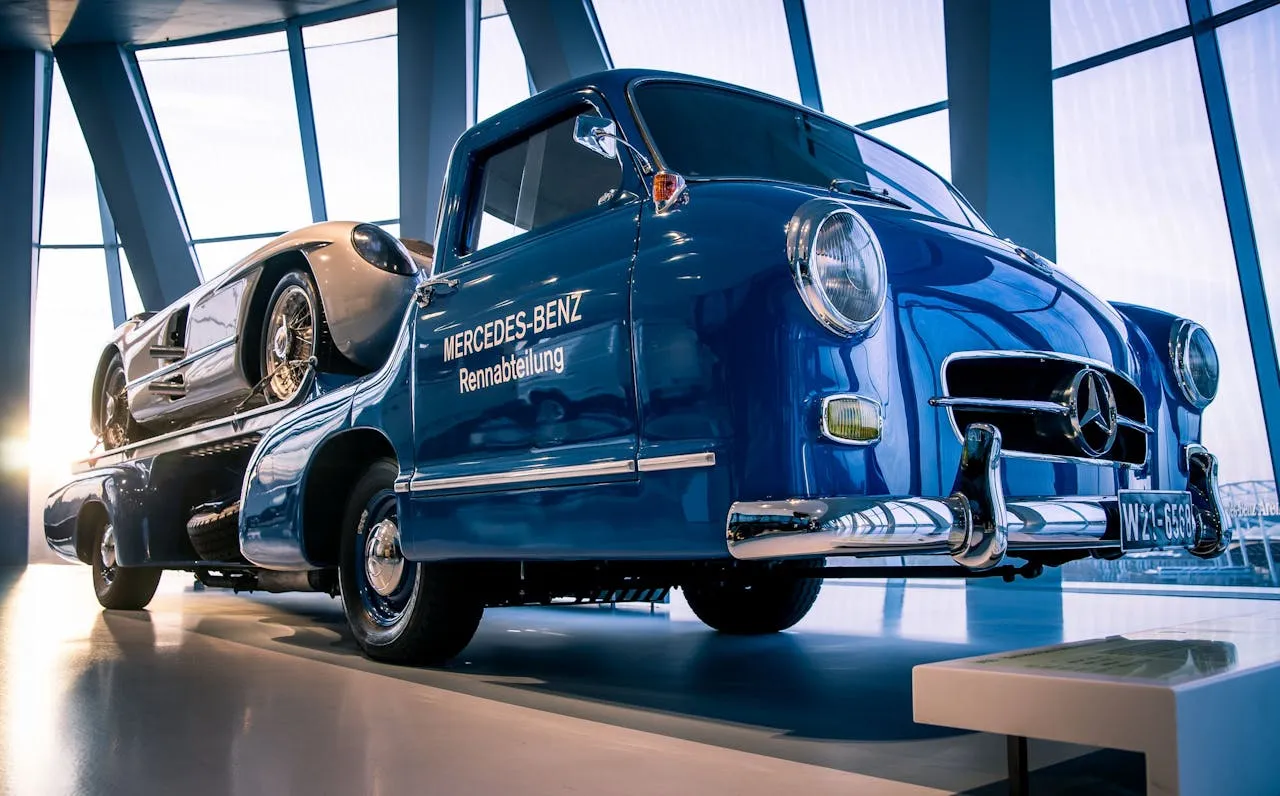
Mercedes-Benz Wörth Plant Celebrates 60 Years Since First Complete Truck Was Built
Wörth am Rhein – The Mercedes-Benz plant in Wörth has reached a remarkable milestone, celebrating 60 years since the first complete truck rolled off its assembly line. Back in July 1965, a green Mercedes-Benz LP 608 marked the beginning of full truck production at the facility, signaling the start of what would become a pivotal era in the company’s commercial vehicle manufacturing.
Production activities at the Wörth plant had actually commenced earlier, in October 1963, with a modest workforce of around 100 employees. In those early days, the plant was tasked with building truck cabs only, which were then shipped to other Mercedes-Benz facilities — Gaggenau for heavy-duty trucks and Mannheim for medium and light-duty trucks — for final assembly. But by 1965, Mercedes-Benz had restructured its commercial vehicle strategy, and Wörth emerged as the centerpiece for full-scale truck production, turning into the central assembly hub for the company’s commercial vehicles.
The transformation of the Wörth site from a cab-production plant into a comprehensive vehicle manufacturing facility was part of Daimler-Benz AG’s broader industrial strategy shift in the 1960s. Originally envisioned as a plant dedicated to producing “aggregates” or components, it was soon identified as the ideal location for consolidating truck manufacturing. This move was part of a strategic reorganization within the company that divided the production process into two primary branches: aggregate production (transmissions, axles, engines, etc.) and complete vehicle assembly.
The Wörth plant’s new role meant that trucks of all weight classes would now be assembled under one roof. Other sites were repurposed accordingly: Gaggenau and Kassel focused on driveline components like transmissions and axles, while Mannheim specialized in engine manufacturing and the production of buses. The reconfiguration allowed Daimler-Benz to streamline operations and improve manufacturing efficiency across its commercial vehicle division.
From the outset, production at the Wörth plant was marked by a high degree of flexibility. Different models — including both light-duty and heavy-duty trucks — were built on the same assembly line, a notable achievement for the time. This flexibility became a defining trait of the plant and laid the groundwork for its long-term success.
Over the past six decades, the Wörth facility has seen exponential growth. Today, it stands as the world’s largest Mercedes-Benz truck assembly plant. More than 4.4 million trucks have been built there since production began, a testament to the plant’s enduring significance within the company’s global operations. Notably, over 800,000 of these have been delivered in Completely Knocked Down (CKD) format — essentially vehicle kits that are shipped to international markets where they are assembled locally, facilitating global expansion and reducing import duties in many countries.
In the modern era, the Mercedes-Benz plant in Wörth continues to play a central role in the company’s production network. It currently manufactures the flagship Actros, the robust Arocs, and the versatile Atego truck models. In addition, the site produces special-purpose vehicles under the Mercedes-Benz Special Trucks division, including the Econic for municipal services, the off-road-capable Unimog, and the heavy-duty Zetros.
In recent years, the Wörth plant has also become a focal point for Daimler Truck’s transition to sustainable, zero-emission transportation. In 2021, series production of the battery-electric Mercedes-Benz eActros 300/400 began, targeting distribution transport applications. The following year, in 2022, the plant introduced the second electric model to its production lineup — the Mercedes-Benz eEconic, designed for municipal and urban operations such as waste collection and utility services.
By late 2024, Wörth once again demonstrated its innovative edge with the launch of series production for the Mercedes-Benz eActros 600. This long-haul electric truck is designed to meet the demands of long-distance freight transport and is a key element of Daimler Truck’s electrification roadmap. It features a powerful new drivetrain and a high-capacity battery system designed to deliver over 500 kilometers of range on a single charge, meeting the needs of fleet operators in Europe and beyond.
As the Wörth plant commemorates six decades of truck manufacturing excellence, it stands as a symbol of technological evolution, adaptability, and commitment to the future of mobility. From its modest beginnings with 100 workers building truck cabs, the plant has grown into a global leader in commercial vehicle production, driving innovation not just in diesel technology but now at the forefront of the electric truck revolution.
The plant’s success over the years is not only reflected in its impressive production numbers but also in its ability to remain relevant in an ever-changing industry. Through continuous investment, modernization, and a focus on sustainable technologies, the Mercedes-Benz plant in Wörth continues to exemplify German engineering and industrial efficiency.
Looking ahead, Daimler Truck has made it clear that Wörth will remain a central pillar in its long-term strategy — both as a production hub and as a driver of innovation in electric and autonomous trucking technologies. With the rise of decarbonization, digitalization, and electrification in the transport sector, Wörth is well-positioned to lead the charge for the next 60 years and beyond.




